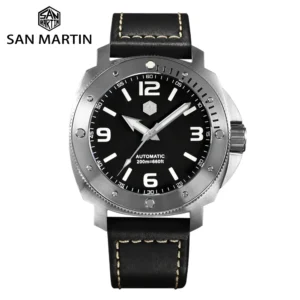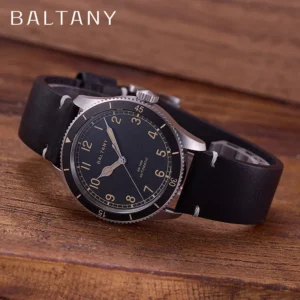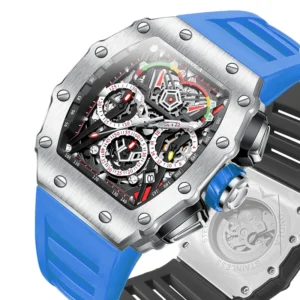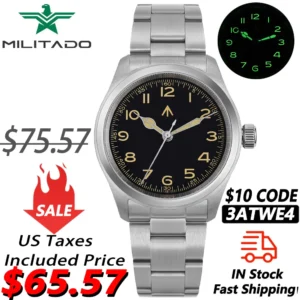Introduction: Time and Warfare – The Indispensable Link
Throughout military history, precise timekeeping has been as crucial as weaponry itself. The difference between victory and defeat often hinged on coordinated movements, perfectly timed attacks, and synchronized operations. From artillery barrages to naval maneuvers, the military’s relationship with time has driven horological innovation for centuries.
The battlefield has consistently served as both testing ground and incubator for watch technology. Harsh conditions, extreme environments, and life-or-death stakes demanded timepieces that could perform flawlessly under circumstances no civilian watch would ever encounter. This necessity birthed innovations that would eventually transform timekeeping for everyone.
What began as bulky pocket watches carried by officers evolved into sophisticated tactical instruments worn by soldiers across all branches of service. This evolution of military watch evolution reflects not just changing technology, but changing warfare itself.
As we explore this chronological journey, we’ll witness how each major conflict pushed timepiece development forward, creating lasting standards and design principles that influence watches to this day.
From Pocket to Wrist: The Birth of Military Watches in World War I
The trenches of World War I created conditions that made traditional pocket watches impractical and sometimes dangerous for soldiers. Officers needed to keep both hands free while still being able to coordinate attacks with split-second timing. This battlefield necessity transformed the wristwatch from a feminine fashion accessory into an essential piece of military equipment.
The “trench watch” emerged as the first purpose-built military timepiece. These early watches featured several adaptations specifically for combat conditions:
- Wire lugs soldered onto pocket watch cases to attach straps
- Metal grilles (shrapnel guards) to protect glass crystals from damage
- Luminous radium paint on hands and numerals for nighttime readability
- Oversized crowns designed for manipulation while wearing gloves
- Leather straps long enough to fit over bulky uniform sleeves
These early military watch developments represented the first time that watches had been specifically modified for combat use. The transition marked a pivotal shift in horological history – the moment when watches moved from the pocket to the wrist for practical rather than fashionable reasons.
Military authorities began issuing basic specifications for these timepieces, emphasizing reliability and legibility over decoration or complexity. The foundational requirements established during this period – durability, readability, and practical functionality – would guide military watch design for the next century.
WWII Era: The Golden Age of Military Watch Development
World War II drove unprecedented demand for reliable, standardized timepieces as modern warfare required precise coordination across vast theaters of operation. This period saw the refinement of military watch designs that would become iconic and influential for decades to come.
Allied powers developed distinctive military watch styles that reflected both their industrial capabilities and tactical needs:
American Innovations:
– The A-11 “Navigation Watch” became the standard U.S. Army Air Forces timepiece
– Black dial with white numerals for maximum contrast
– Center seconds hand for precise timing
– Hacking mechanism (seconds hand stops when crown is pulled) for synchronization
– Water-resistant cases for all-weather operation
British Developments:
– The “Dirty Dozen” watches (W.W.W. – Wrist, Watch, Waterproof) set unified standards
– Twelve different manufacturers produced watches to the same specifications
– Broad arrow marking on dials indicating government property
– Emphasis on accuracy and reliability under combat conditions
– Robust cases designed for battlefield abuse
German Engineering:
– Luftwaffe “Beobachtungsuhren” (B-Uhren) observation watches featured oversized cases
– Highly legible designs with large numerals for navigation
– Anti-magnetic properties for use in aircraft
– Central seconds hand for precise timing of flight legs
Other Notable Developments:
– Italian Navy commissioned specialized luminous dive watches from Panerai
– Waterproof cases became standard for most military timepieces
– Shock-resistant movements gained widespread adoption
These WWII-era watches established enduring standards that defined what a military timepiece should be. Many modern classic field watches draw direct inspiration from these historic designs, which balanced functionality, legibility, and durability.
Cold War Specialization: Purpose-Built Military Timepieces
As the Cold War intensified, military timepieces evolved from general-issue items to specialized tools designed for specific combat roles and environments. This period saw military branches developing distinct requirements for different operational needs.
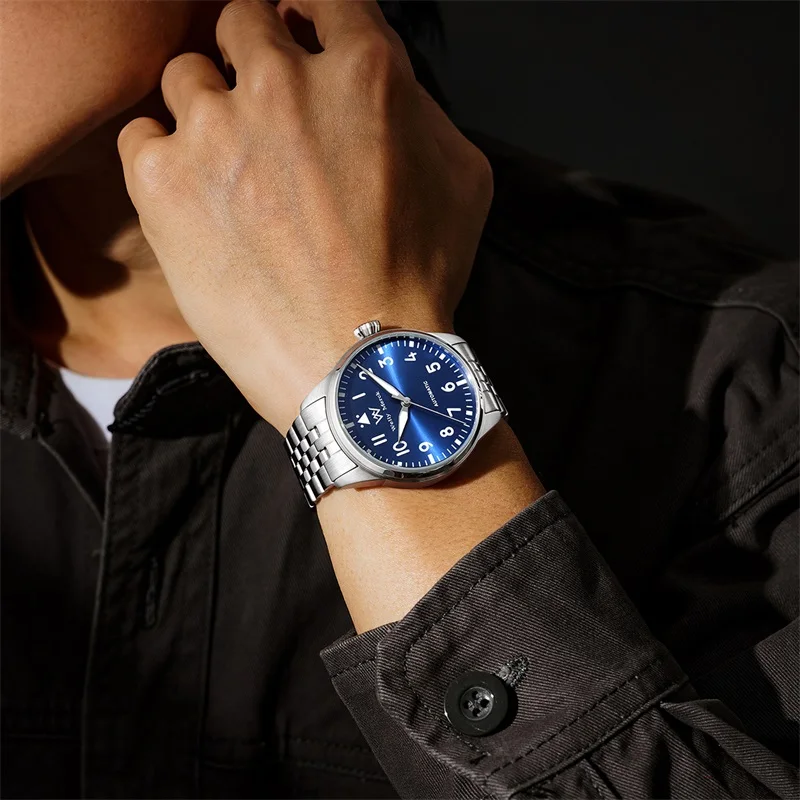
Dive Watches for Naval Operations:
– Water resistance increased dramatically (200m+)
– Unidirectional rotating bezels for tracking dive times
– Helium escape valves for saturation diving
– Highly luminous markers for underwater visibility
– Secure strap systems (NATO straps, expanding bracelets)
Pilot Watches and Chronographs:
– Enhanced anti-magnetic protection for cockpit environments
– Multiple chronograph functions for navigation and mission timing
– GMT functions for tracking multiple time zones
– Slide rule bezels for in-flight calculations
Field Watches for Infantry:
– Improved field watch functionality in combat zones with enhanced shock resistance
– Non-reflective finishes to prevent detection
– Tritium illumination replacing radium for safer luminosity
– Durable cases designed for extreme environments from desert to arctic conditions
During this era, formal military specifications became increasingly detailed and rigorous. The American MIL-W-46374 series and the British DEF STAN 66-4 defined exacting standards for everything from accuracy to durability. These specifications often pushed manufacturers to develop new solutions and technologies.
The specialized nature of these timepieces reflected the increasingly technical nature of warfare itself. Modern automatic field military watches continue to incorporate many design elements from this fertile period of military watch development.
Technological Revolutions: From Mechanical to Digital Military Timepieces
The post-war decades saw revolutionary changes in timekeeping technology that transformed military watches. This period witnessed major transitions from purely mechanical movements to electronic, quartz, and eventually digital timepieces.
Mechanical Innovations (1950s-1970s):
– Enhanced shock resistance systems to protect movement components
– Improved water resistance techniques (triple-sealed crowns, better gaskets)
– High-grade automatic movements reducing the need for manual winding
– Transition from radioactive luminous materials to safer tritium and phosphorescent compounds
The Quartz Revolution (1970s-1990s):
– Military adoption of quartz technology for superior accuracy
– Battery-powered movements eliminating manual winding requirements
– Reduced maintenance needs and longer service intervals
– Cost-effectiveness allowing wider distribution to personnel
Digital Transformation (1980s-2000s):
– LCD displays with multiple information fields
– Additional functionality: chronographs, alarms, multiple time zones
– Plastic composites and resin cases for extreme durability
– Improved battery life for extended field operations
GPS and Smart Integration (2000s-Present):
– Integration of GPS capabilities for navigation and positioning
– Altimeters, barometers, and compass functions
– Data recording and transfer capabilities
– Advanced power solutions (solar, kinetic, etc.)
These technological shifts dramatically changed military procurement patterns. The timeline of tactical field watch innovation shows a constant push toward greater functionality, reliability, and situational awareness. Despite these advances, many military units maintained traditional mechanical watches as backups, recognizing their reliability when electronic systems fail.
Each technological leap expanded the capabilities of military timepieces while maintaining the core requirements of durability and readability established decades earlier.
Core Design Elements: The Anatomy of an Effective Military Timepiece
Despite evolving technologies and varying specifications across eras, certain fundamental design elements have remained consistent in military watches. These core characteristics define what makes a timepiece suitable for combat operations.
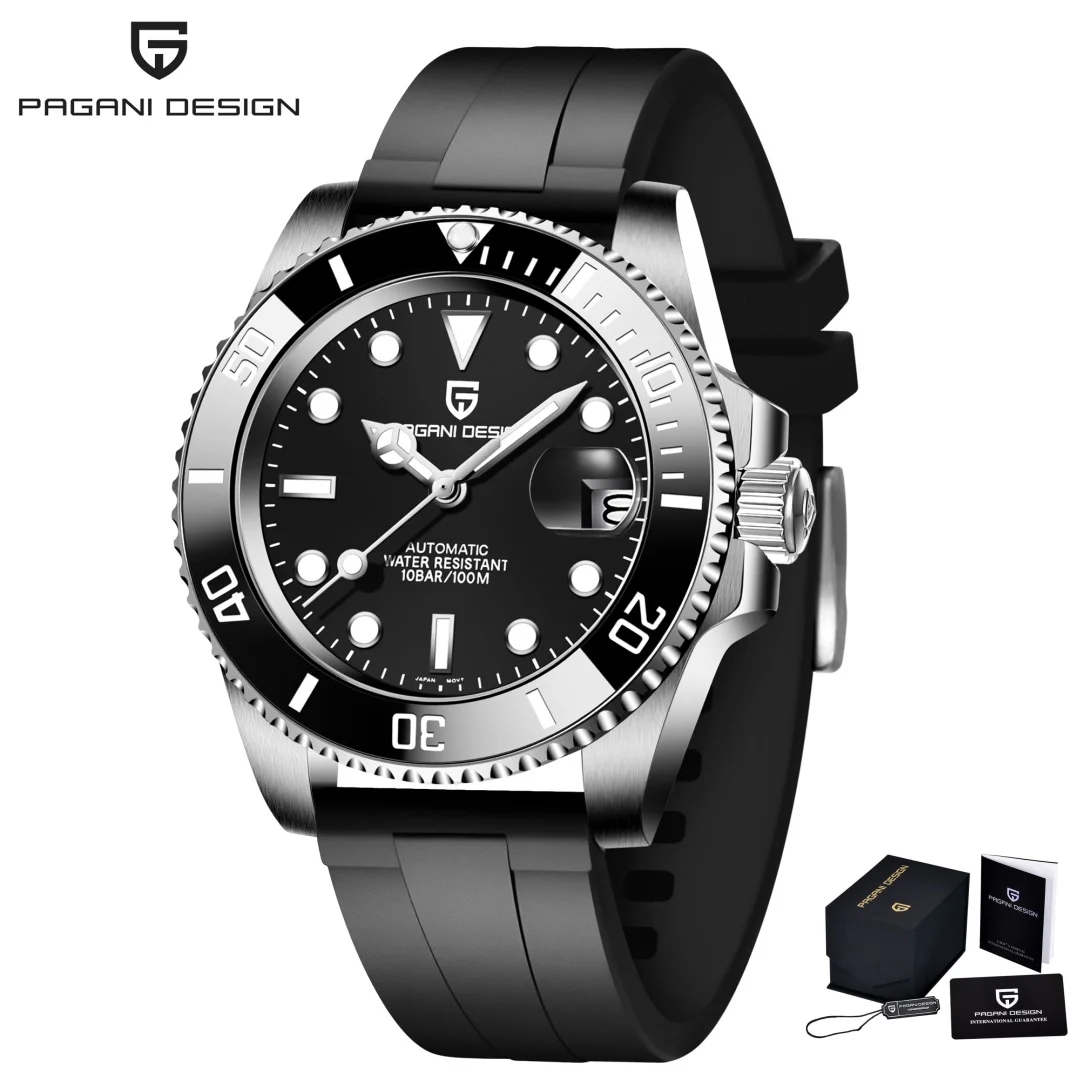
Legibility:
– High-contrast dials (typically black with white markings)
– Luminous hands and indices for nighttime visibility
– Uncluttered design with essential information only
– Large, easily readable numerals
– Clearly marked minute tracks for precise timing
Durability and Robustness:
– Understanding durability factors in rugged watches reveals key military requirements
– Shock-resistant movements and mounting systems
– Scratch-resistant crystals (sapphire in modern versions)
– Reinforced case designs with protective elements
– Water and dust resistance appropriate to mission requirements
– Temperature tolerance for extreme environments
Accuracy and Synchronization:
– Precision movements meeting chronometer or better standards
– Hacking seconds feature for precise synchronization
– Clear minute and second markings for timing operations
– Stable timekeeping in varying conditions and temperatures
Practicality:
– Non-reflective finishes to prevent detection
– Secure strap systems resistant to accidental removal
– Easy maintenance and field serviceability
– Compatibility with military gear and clothing
These fundamental elements have remained remarkably consistent despite technological evolution. Modern tactical automatic watches continue to incorporate these essential features while adding contemporary materials and capabilities.
The military watch’s distinctive appearance isn’t about style—it’s the result of decades of refinement toward optimal functionality in life-threatening situations. Each design element serves a specific purpose related to combat effectiveness and operational success.
Modern Military Timekeeping: 21st Century Innovations
Today’s military timepieces represent the culmination of over a century of battlefield-driven innovation. Modern armed forces utilize watches that combine traditional reliability with cutting-edge technology, resulting in unprecedented capabilities.
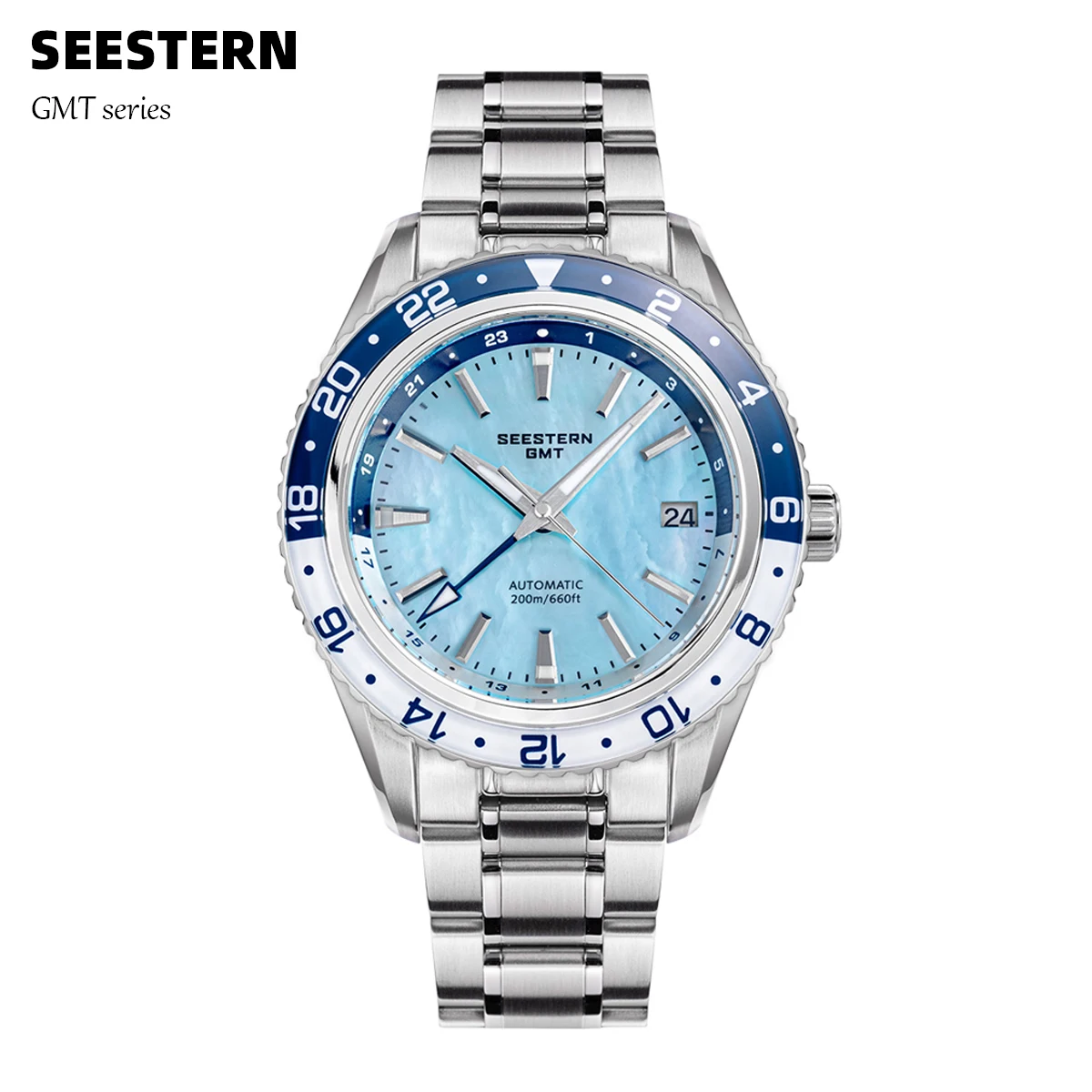
Advanced Features in Contemporary Military Watches:
– GPS navigation systems with position tracking
– Multiple time zone displays for global operations
– Solar power systems eliminating battery replacement needs
– Bluetooth connectivity for data transmission
– Night vision compatibility modes
– Barometric altimeters and environmental sensors
Smart Capabilities:
– Health monitoring for personnel condition awareness
– Communication functions integrated with tactical systems
– Mission-specific data collection and analysis
– Custom apps for specialized military applications
Despite these technological advances, the core requirements established decades ago remain essential. Modern military watches still prioritize:
- Extreme durability in adverse conditions
- Reliable functionality without external power sources
- Clear readability in all environments
- Practical operation while wearing tactical gear
The balance between technological advancement and battlefield practicality continues to define military timepiece development. Today’s GMT pilot watches reflect this balance, offering GMT functions across timezones while maintaining robust construction and reliability.
Military Inspired Automatic Watches, Rugged Automatic Watches, Tactical Automatic Watches
Price range: $852.14 through $994.60 Select options This product has multiple variants. The options may be chosen on the product pageClassic Automatic Dress Watches, GMT Automatic Watches, GMT Pilot Watches
Price range: $1,240.86 through $1,463.33 Select options This product has multiple variants. The options may be chosen on the product pageBronze Automatic Watches, Military Inspired Automatic Watches, Professional Spec Dive Watches
Price range: $1,442.21 through $1,442.82 Select options This product has multiple variants. The options may be chosen on the product pageClassic Pilot Watches, Military Inspired Automatic Watches
$561.00 Select options This product has multiple variants. The options may be chosen on the product pageRugged Automatic Watches, Unique Automatic Watches
Price range: $228.96 through $231.10 Select options This product has multiple variants. The options may be chosen on the product pageClassic Field Watches, Military Inspired Automatic Watches
Price range: $280.87 through $338.51 Select options This product has multiple variants. The options may be chosen on the product page
The continued evolution of military watches demonstrates that even in an age of digital communications and satellite navigation, a reliable timepiece remains an essential piece of equipment for modern warfighters.
The Collector’s Perspective: Military Watches as Historical Artifacts
Military timepieces have transcended their utilitarian origins to become highly sought-after collectors’ items. These watches represent tangible connections to pivotal historical moments and embody the engineering challenges of their respective eras.
What makes military watches particularly appealing to collectors:
- Direct connection to significant historical events and campaigns
- Clear provenance and purpose compared to civilian models
- Genuine battlefield testing and proven durability
- Technical innovations that later influenced civilian watchmaking
- Distinctive design elements with functional rather than decorative origins
The complete history of field watches in military service reveals why these timepieces have such significance. Each watch tells a story not just of technological development but of human experience under extreme conditions.
Military watch design has profoundly influenced civilian timepieces. Features we now take for granted – luminous dials, water resistance, shock protection – were refined or invented for military use before becoming standard in consumer watches.
Today’s military-inspired automatic watches allow collectors to experience the aesthetic and functional elements of these historic timepieces while incorporating modern manufacturing standards and materials.
Conclusion: The Enduring Legacy of Military Timepiece Innovation
The evolution of military watches represents one of the most compelling examples of how necessity drives innovation. From the trenches of World War I to modern special operations, the demands of warfare have consistently pushed watchmaking technology forward.
This journey from modified pocket watches to sophisticated digital instruments reflects broader technological advances, but also the unchanging need for reliability and functionality in combat situations. The core principles established over a century ago – legibility, durability, accuracy, and practicality – remain just as relevant today.
Perhaps most significantly, military necessity forged the modern field watch in ways that continue to influence horology. The design language established for battlefield use now defines what many consider the ideal tool watch – clear, purposeful, and reliable.
As warfare continues to evolve, military timepieces will undoubtedly adapt to new requirements. However, the fundamental relationship between precise timekeeping and military effectiveness remains unbroken – a testament to how deeply time management is woven into the fabric of military operations.
The legacy of military watch development serves as a reminder that the most enduring innovations often emerge from the most challenging circumstances, where failure is not an option and performance must be guaranteed.


